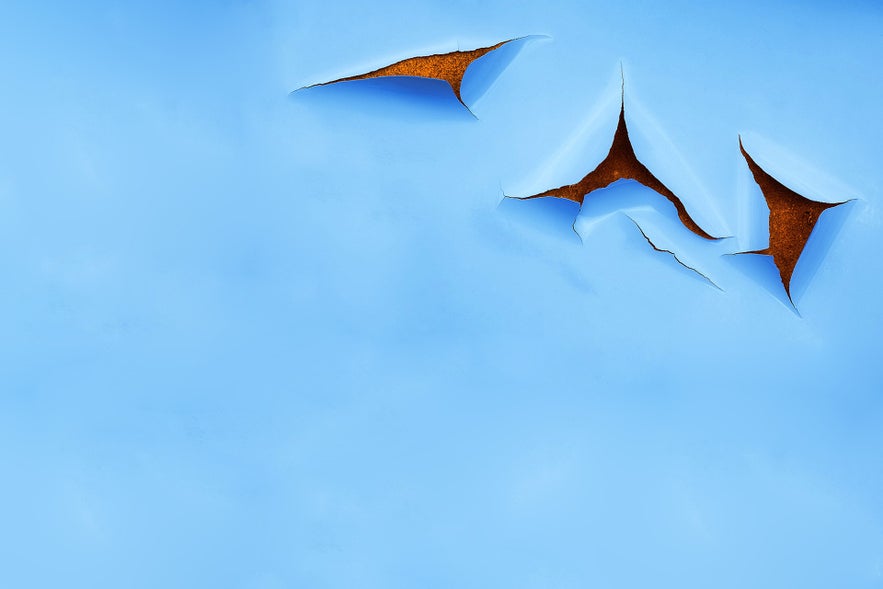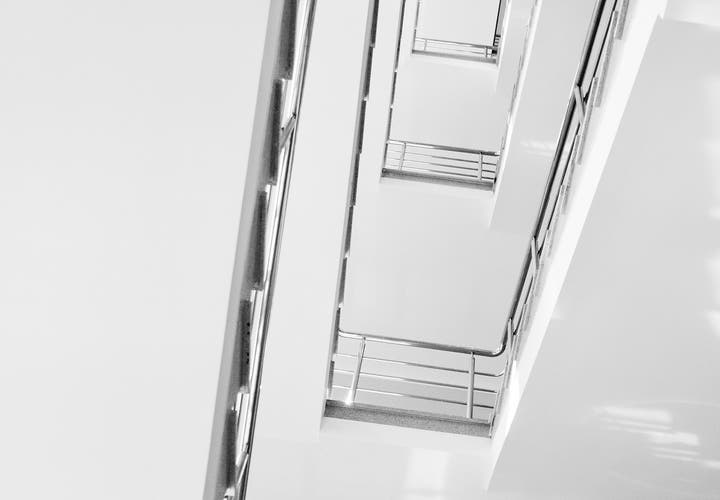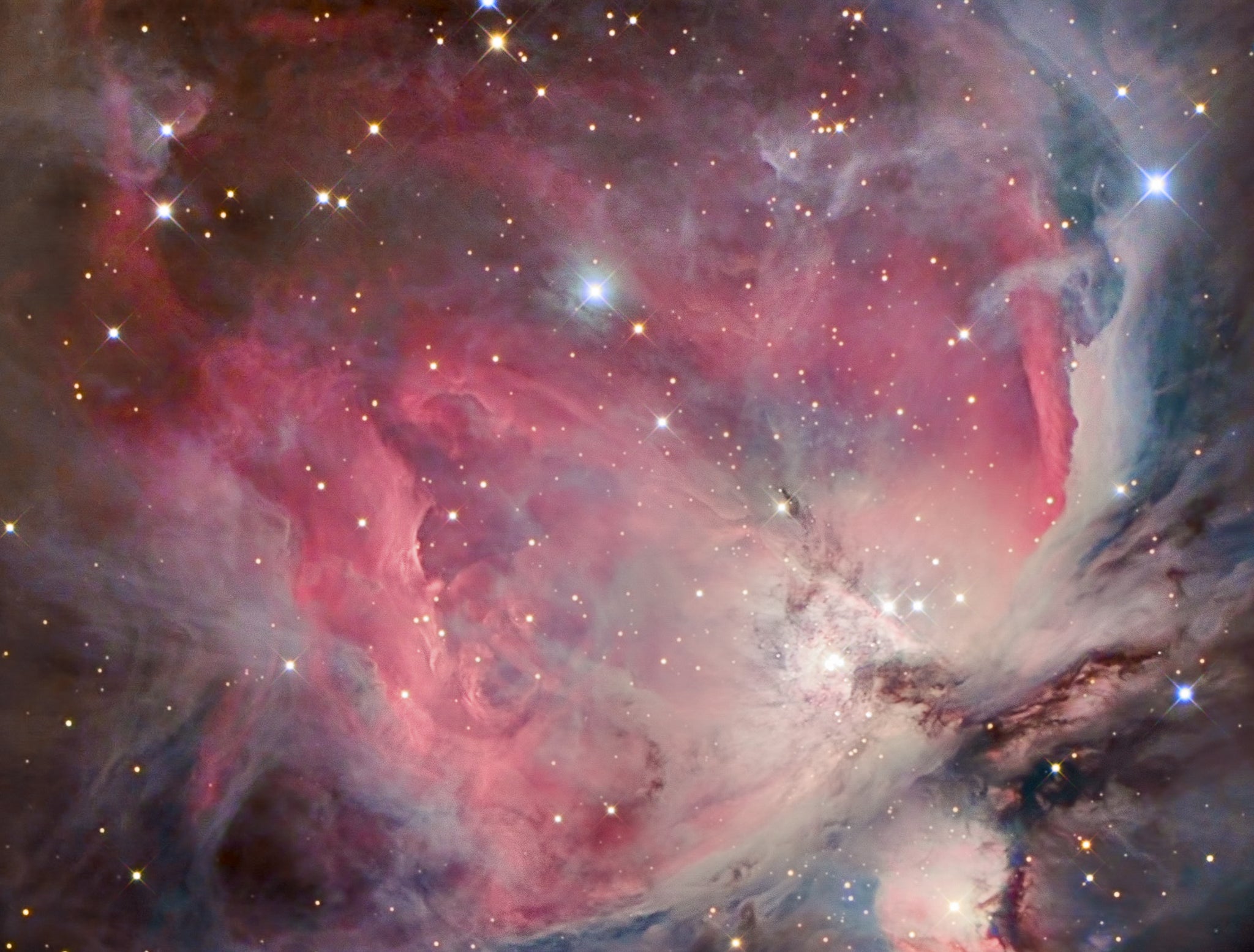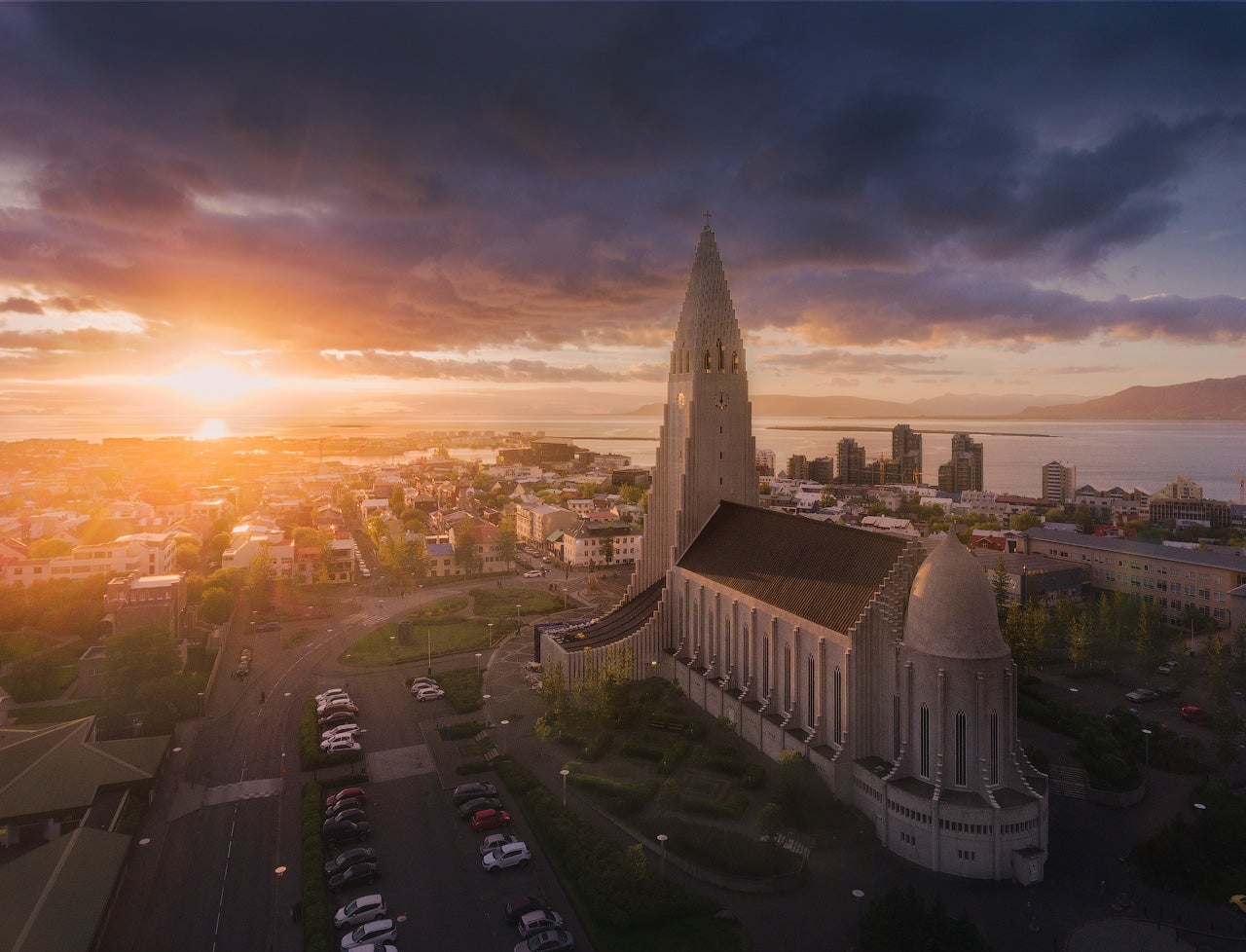
There is merit to slowing down and enjoying a more peaceful way of life. The same can be said for photography, which is sometimes designed to be intentionally loud in order to capture our attention and to captivate the audience.
- Check out these articles on Photography Techniques
- Learn How to Minimise and Clean Camera Sensor Dust
Minimalist photography provides an alternative in a world where there is so much content already saturating our senses. It can give our eyes a bit of a rest while enabling more complex and thoughtful conversation around subject matter by encouraging us to appreciate the finer points of art, including composition, shapes and creative style.
 Minimal photography is a great genre for simplifying your work. Photo by: 'Pixabay'.
Minimal photography is a great genre for simplifying your work. Photo by: 'Pixabay'.
If you’re looking for a way to simplify your photography in a meaningful way, then minimal photography is a genre that is worth considering. In this article, we’ll take a look at the definition of minimalist art, the key components of minimalist photography as well as how you can start to make mesmerising minimal images yourself.
 The principles of minimal photography are not difficult to learn. Photo by: 'Pxhere'.
The principles of minimal photography are not difficult to learn. Photo by: 'Pxhere'.
What is Minimal Photography?
Minimal photography is a genre that is focused on simplicity. That means that it relies on the most basic use of compositional elements and involves the omission of all non-required components to express the essence of the subject. In this sense, minimalist art aims to convey meaning in the least complicated way that is possible.
 Minimalist art aims to convey a message in the simplest way possible. Photo by: 'Pixabay'.
Minimalist art aims to convey a message in the simplest way possible. Photo by: 'Pixabay'.
The minimal movement emerged in America during the 1960s, amongst artists in New York who were looking for a different means of expression. In seeking to challenge the traditional understanding of art at the time, they eschewed the notion of it as being an illusionary view of the world, inspiring their audience to appreciate the finer details of the materials used in their work instead.
 Minimalism had its early roots in sculpture. Photo by: 'Pixabay'.
Minimalism had its early roots in sculpture. Photo by: 'Pixabay'.
While minimalism had its early roots in sculpture, it has since spread broadly across the realm of visual arts to include architecture, interior design and photography.
- See also: Interview with Michael Shainblum
The Key Components of Minimalist Photography
For minimalist photographs to be successful, it is important for them to embody clarity and simplicity of form. In addition, the emphasis of composition should be on shapes, textures and colours. Meanwhile, the image should contain no discernible narrative, references or content that reflects personal ideas, thoughts or beliefs. Rather, the power of visual storytelling should rely solely on these key components, delineating a more literal interpretation of the subject matter.
 One of the principles of minimalist photography is emphasis on shapes, lines and colours. Photo by: 'Pxhere'.
One of the principles of minimalist photography is emphasis on shapes, lines and colours. Photo by: 'Pxhere'.
Getting Started with Minimal Photography
Now that you have a basic understanding of the theory behind minimal photography, it’s time to start looking at the finer points so that you can get started with this sophisticated artform.
 Minimalist photography is a sophisticated artform. Photo by: 'Pxhere'.
Minimalist photography is a sophisticated artform. Photo by: 'Pxhere'.
Learning to Minimise
When preparing to take minimalist photographs, it’s important to learn to see the world around you in a different sense. Rather than paying attention to expansive vistas and filling the frame with a bounty of subjects to keep the viewer’s eye trained upon your image, concentrate instead on keeping it simple by minimising distractions.
 Learn to see the world in a different sense. Photo by: 'Pxhere'.
Learn to see the world in a different sense. Photo by: 'Pxhere'.
It can be difficult at first to develop this skill. Our instinct as humans is to take in everything within our surroundings to perform risk assessments for our safety and wellbeing. However, when you overcome the urge to fixate on the clutter and chaos, you’ll be able to hone in on and observe pure, straightforward details in an uncomplicated fashion.
 It can be difficult to see the world without all the chaos. Photo by: 'Pixabay'.
It can be difficult to see the world without all the chaos. Photo by: 'Pixabay'.
Find an Interesting Subject
Interesting subjects for minimal photography can be found all around you, from within your own home to outdoors in your backyard, across the urban sprawl of the city, on the coastline by the sea and everywhere in between. Try setting up objects on your desk in a tidy fashion, or even looking through your kitchen for fruit, crockery and even pieces of cutlery that can be used in your compositions.
 You can find interesting subjects for minimalist photography at home. Photo by: 'Pxhere'.
You can find interesting subjects for minimalist photography at home. Photo by: 'Pxhere'.
For minimal photography outdoors, you’ll need to scout locations for objects that can be isolated from the background, such as a lone tree or a mountain peak surrounded by mist. Even a single cloud in the sky can make for an interesting subject, depending on how you frame it. Some photographers go one step further and use drones or planes to shoot the landscape from the top down, which can provide a fascinating view of our planet in a much simpler way.
 Architecture makes for great minimal photos. Photo by: 'Pxhere'.
Architecture makes for great minimal photos. Photo by: 'Pxhere'.
Closer to civilisation, buildings, monuments and interior architecture can provide immense opportunities for creating minimalist photographs. Search for strong geometric patterns, textures and contrasts between light and dark, all of which can be incredibly fascinating when seen in detail. Think also of stairways, windows, door frames and even statues – these can become extremely interesting subjects when you have minimalism in mind, provided that you capture them in a way that meets the criteria for minimalist art.
 Stairs make great subjects for minimal photography. Photo by: 'Pxhere'.
Stairs make great subjects for minimal photography. Photo by: 'Pxhere'.
While it may be frustrating to see these subjects in the environment around you to begin with, you’ll find that as you progress in this genre of photography, spotting subject matter will become easier as you train your eyes to minimise the distractions around you. Very soon, you’ll start to notice interesting subjects with very little effort!
 There are interesting subjects for minimal photography all around you! Photo by: 'Pxhere'.
There are interesting subjects for minimal photography all around you! Photo by: 'Pxhere'.
Choosing the Right Focal Length
While you can use any equipment to make minimal photographs, different focal lengths will yield a diverse range of results.
 Choosing the right focal length will depend on your creative pursuits. Photo by: 'Pxhere'.
Choosing the right focal length will depend on your creative pursuits. Photo by: 'Pxhere'.
Wide angle lenses are best used indoors in enclosed spaces, such as a museum, library or even your living room. The large field of view allows you to get up close to your subjects, giving them breathing room around the edges of the frame. Meanwhile, the distortion effect of most wide angle lenses can highlight certain perspectives, putting the emphasis on your subject with very little fuss.
 Wide angle lenses are great for enclosed, indoor spaces. Photo by: 'Pixabay'.
Wide angle lenses are great for enclosed, indoor spaces. Photo by: 'Pixabay'.
Mid-range zoom lenses are great for when you’re walking around town, observing the architecture, people and details in your day-to-day life. This is because they cover quite a range of focal lengths that will allow you to exercise your creativity, when subjects are not often too close for comfort or too far in the distance.
 Mid-range zoom lenses are great for people and portraits. Photo by: 'Pxhere'.
Mid-range zoom lenses are great for people and portraits. Photo by: 'Pxhere'.
Telephoto lenses are perfect for minimal photography outdoors, when wildlife such as birds are involved or when you need to put some distance between yourself and your subject. They allow you to compress the scene, focus in on details and textures, and give you the ability to take candid shots discreetly. Being able to zoom all the way in to your subject gives you the added advantage of cutting out distractions quite naturally, without having to move and change your composition.
 Telephoto lenses are good for capturing abstract details. Photo by: 'Pixabay'.
Telephoto lenses are good for capturing abstract details. Photo by: 'Pixabay'.
What is a Strong Composition in Minimal Photography?
Minimal photographs are nothing without a strong composition. Without something to anchor the frame, they become more boring and easily overlooked than other images.
 A strong composition in minimal photography uses as few elements as possible. Photo by: 'Pxhere'.
A strong composition in minimal photography uses as few elements as possible. Photo by: 'Pxhere'.
The key to drawing attention in minimalist photography is to combine interesting subject matter with a strong composition that uses as few elements as possible. Basically, the aim is to include the bare minimum in your shot whilst still maintaining visual impact. The main factor to keep in mind is that the more simple that your composition is, the more powerful it will be.
 The more simple your composition, the more powerful it will be. Photo by: 'Pxhere'.
The more simple your composition, the more powerful it will be. Photo by: 'Pxhere'.
Rule of Thirds
The Rule of Thirds is a basic compositional tool that is very useful for making minimal photographs. It involves dividing your frame into three parts both horizontally and vertically. The theory is that elements may be placed along the intersections of the lines, in one of the sections or thirds to create a more well-balanced composition. By using the Rule of Thirds, you can decide very easily how to frame your minimalist image for an aesthetically pleasing result.
 The Rule of Thirds is a useful compositional tool in minimal photography. Photo by: 'Pixabay'.
The Rule of Thirds is a useful compositional tool in minimal photography. Photo by: 'Pixabay'.
- See also: Rule of Thirds Explained
Negative Space
Negative space in a photograph refers to the area surrounding the subject that is kept intentionally empty. This compositional tool is extremely useful in minimal photography, as it helps to reduce distractions in your frame and places the emphasis back on your subject matter.
 Negative space makes your subject matter all the more profound. Photo by: 'Pxhere'.
Negative space makes your subject matter all the more profound. Photo by: 'Pxhere'.
In most cases, negative space gives your subject room to breathe, creating harmony and balance within the scene. It is a great way to isolate your subject from its surroundings.
Line
Lines are a very powerful compositional tool in photography that can draw your viewer’s attention to an image and lead their eye on a journey around the frame. Directional lines can also change the atmosphere of your photograph or even behave as subject matter in their own right.
 Lines can be used to add a sense of depth. Photo by: 'Pixabay'.
Lines can be used to add a sense of depth. Photo by: 'Pixabay'.
You can use lines in your minimal photography to divide the frame, create a sense of separation between subjects, define shapes, demonstrate connection between two elements and add a sense of depth.
 Lines are very effective in minimal photography for demonstrating connection between elements. Photo by: 'Pixabay'.
Lines are very effective in minimal photography for demonstrating connection between elements. Photo by: 'Pixabay'.
Shape
The art of minimal photography relies a lot on the compositional tool of shape. Whether they are geometric or more abstract, shapes can be used to create interest and stronger visual impact.
 Shape is a difficult tool to master in minimal photography. Photo by: 'Pixabay'.
Shape is a difficult tool to master in minimal photography. Photo by: 'Pixabay'.
Using this tool for minimalist compositions can be difficult to master, as it involves not just focusing on physical matter but also implied shapes as a result of the interplay between light and shadow, blur and colour. Once you get the hang of it though, you’ll notice a vast improvement in your images.
 Cropping is a good way to emphasise shape. Photo by: 'Pxhere'.
Cropping is a good way to emphasise shape. Photo by: 'Pxhere'.
Some of the techniques which you can use to place emphasis on shapes include cropping the image, fragmenting the scene by placing something in front of your subject that is out of focus or blurred, experimenting with depth of field, framing in such a way that the subject resembles something else, as well as using negative space to form an outline.
 You can use negative space to help you form an outline. Photo by: 'Pxhere'.
You can use negative space to help you form an outline. Photo by: 'Pxhere'.
Form
Form is a challenging compositional tool that can really elevate your minimalist photography when used effectively. It involves representing a subject as three dimensional by using shape to create an illusion of depth. This can be done with creative arrangement of textures, patterns, light and shadow within the frame.
 Mastering form can be challenging but when used effectively, it can make a 2D image appear 3D. Photo by: 'Pixabay'.
Mastering form can be challenging but when used effectively, it can make a 2D image appear 3D. Photo by: 'Pixabay'.
Photographic Techniques for Captivating Minimalism
Now that you have some knowledge about how to compose a minimalist photograph, it’s time to explore some photographic techniques that you can use to take your images from the mundane to more compelling.
 Effective use of photographic techniques can elevate your minimal photography to a whole new level. Photo by: 'Pxhere'.
Effective use of photographic techniques can elevate your minimal photography to a whole new level. Photo by: 'Pxhere'.
Complementary Colours
Basic colour theory in photography denotes that complementary colours are those which are exact opposites in terms of hue on the colour wheel. When placed next to one another within a frame, these colours create a strong visual contrast which can make for bold, dynamic and aesthetically pleasing images.
 Complementary colours help to create interest. Photo by: 'Pixabay'.
Complementary colours help to create interest. Photo by: 'Pixabay'.
Complementary colour schemes are a great way to create interest within minimal photographs, by enhancing the overall significance of your subject matter whilst creating a sense of balance.
Black and White / Monochrome Photography
 Monochrome photography can lead to more visual impact. Photo by: 'Pixabay'.
Monochrome photography can lead to more visual impact. Photo by: 'Pixabay'.
Taking minimal images in black and white or converting them to monochrome with post-processing software can result in more visual impact. Without the distraction of colour, your viewer is forced to place their attention solely upon the composition and subject matter, allowing them the opportunity to pause for thought.
 Black and white minimal photographs draw the viewer's eye in straight to the subject. Photo by: 'Pxhere'.
Black and white minimal photographs draw the viewer's eye in straight to the subject. Photo by: 'Pxhere'.
This photographic technique is a great way to simplify the frame, thereby communicating the essence of what is at the heart of the image.
- See also: 15 Tips for Monochrome Photography
Long Exposure
Long exposure photography is a technique that involves using slower shutter speeds to blur movement whilst maintaining the sharpness of stationary objects. When used in minimal photography, it can give your images a surreal and oftentimes otherworldly quality.
 Long exposure is a great way to experiment with capturing motion. Photo by: 'Pxhere'.
Long exposure is a great way to experiment with capturing motion. Photo by: 'Pxhere'.
Experimenting with extending your shutter speed will enable you to capture a diverse range of motion which can be used to highlight your subject or other compositional elements. For example, you can capture striking images simply by blurring clouds in the sky or waves by the beach, in order to place the emphasis on whatever your subject may be.
 Long exposure can be used effectively during the daytime for stunning minimal photographs. Photo by: 'Pixabay'.
Long exposure can be used effectively during the daytime for stunning minimal photographs. Photo by: 'Pixabay'.
One of the most creative ways to utilise the long exposure technique is to create minimalist photographs outdoors during the daytime. By slowing your shutter speed by a few minutes or even more, you can cut out all of the distractions – including people moving about – to produce a dreamlike scene.
- See also: Ultimate Guide to Long Exposure
Summary
 Minimal photography is a slower artform that is aesthetically pleasing in its own right. Photo by: 'Pxhere'.
Minimal photography is a slower artform that is aesthetically pleasing in its own right. Photo by: 'Pxhere'.
While it won’t be everyone’s cup of tea, minimalist photography provides an alternative to the fast-paced eye-candy that pops up so often within our social media feeds. This slower and more considered approach to capturing an image can be used to inspire your audience to appreciate your work in a more thoughtful manner. It’s a wonderful way to get down to basics with your photography and can even have a large impact upon your own understanding of the world around you. The best approach for drawing meaning from it is to experience it for yourself, so the next time that you have your camera in-hand, try to concentrate on keeping things simple to capture better minimal photographs.
About the author: Serena Dzenis is a landscape photographer based in Iceland. You can find more of her work on her website or by following her on Facebook and Instagram.
Have you tried to take minimal photographs? Is this a genre of photography that you're interested in? What do you find most appealing about minimal art? Leave a comment and share your thoughts below!












